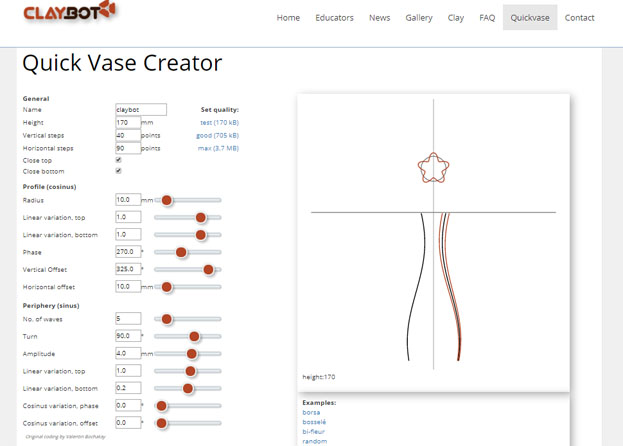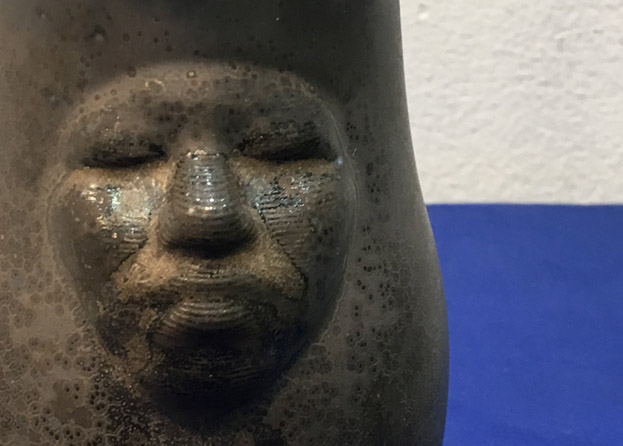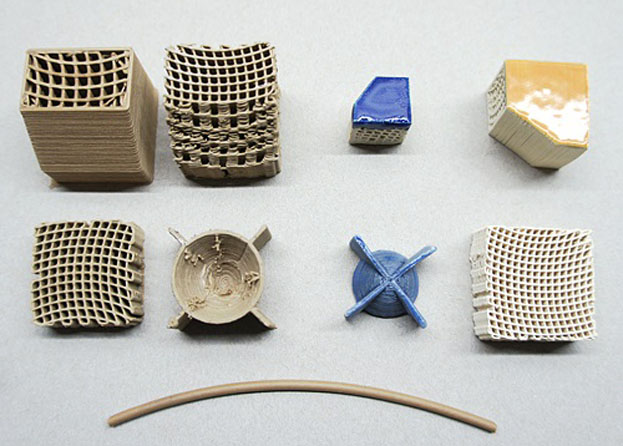Clay objects have been produced for thousands of years. Clay vases are amongst the most valuable artefacts in many historical periods, showcasing the incredible talents of humans in those eras. Printing with clay is a new technique and understanding your medium has been the challenge for creators in any period. In 3D clay printing the physical properties of the clay mix underpin everything and certainly that of vase design. Some difficult shapes are handled beautifully but other designs can be difficult. But now you can develop your understanding very quickly and very easily.
How? Claybot is absolutely thrilled to announce the integration of QuickVase.
A mathematically-derived vase design programme from Swiss expert, Valentin Bochatay. You can create new objects to try out in just a few seconds. The QuickVase application from Claybot is an intuitive, highly visual experience. Select a base shape and then simply add waves and curves to the cross-section at different heights of your vase using slider-bars.
The program exports a 3D printable .stl file for the 3D Slicer used in Claybot. Explore the nuances of the 3D-clay mix by trial and error prints of your own in addition to others in the Claybot user community. Find out how overhangs react and learn how better to support them. Discover how to improve rigidity with greater wall thicknesses or layer height variations. This is truly where art does meet science! And that’s before you get to the formula chemistry surrounding glazes and slips when it comes to decoration. It’s an exciting way to learn!




